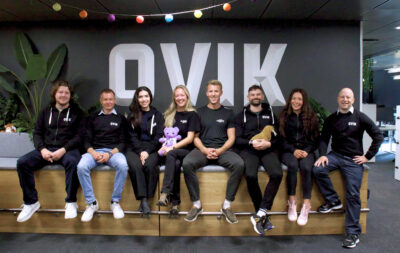
Virta built a successful platform business and went global – we can all learn from that
In ten years, Virta has become a global pioneer in smart charging solutions for electric vehicles. Jussi Ahtikari, Chief Technology Officer at Virta, shares his advice and lessons from the journey.
Virta’s mission is tied to a problem faced by renewable energy: overproduction of, for example, wind or solar power cannot be stored, except in the large batteries of electric vehicles and the like.
When Virta was founded in 2013, the number of electric vehicles in Finland was modest. Of all the 118,000 cars registered that year, only 60 were electric, and by the end of the year, there were only a total of 169 electric vehicles in Finland.
“In theory, even if we had a 100 percent market share, we would only have had 169 customers – and even if EVs would have been ten times as popular, it would still not have been big.”
Jussi Ahtikari, Chief Technology Officer at Virta
Ahtikari joined the company in the summer of 2014 and has led the development of Virta’s EV charging platform since.
“In spite of the public discussion and lack of faith, we believed in growth. Before the end of 2014, we had published the first commercial version and showed our investors that we were onto something.”
Today, the Powered by Virta EV charging platform and network covers 75,000 chargers in 35 countries and 61 percent of Europe’s public charging infrastructure. More than a thousand organizations in the retail, hotel, parking, real estate and energy industries use Virta’s platform.
In 2023, Financial Times included Virta on the Europe’s 1,000 Fastest Growing Companies list for the fourth time in a row.
Creating a platform business that combines hardware and software
Back in 2013, charging EVs was mostly free as many companies were focused on selling the hardware. The EV charging business model was that customers could buy a card granting unlimited access to charging stations or a physical key to the charger, and then charge their cars limitlessly. Different cities had their own charging stations each with their own peculiarities, and charging stations were becoming isolated.
In the beginning, Virta made three right decisions. First of all, they decided to create a business that scales with digital services. Secondly, they started to design a more universal cloud-based platform instead of building an IT system that would only work for a specific company. And thirdly, they immediately started to plan a commercial model for EV charging.
“Our idea is that the driver doesn’t have to care about who owns the charging station if it’s a part of Virta’s platform. As a driver, you get access to all stations that are connected, and you can use them with an app”, Ahtikari says.
“We were not thinking about how to sell electricity to car owners. Instead, we were focusing on how to get the drivers to download our app and get them to subscribe.”
EV charging poles come in various shapes and sizes – in fact, there are more than 400 different models of chargers. Some have buttons, some have lids, and they all function – or don’t – according to their own logic.
“The hardware is constantly failing, and that is challenging when you want to create a great digital experience but also a great real-world experience”, Ahtikari says.
Testing every scenario is next to impossible and if something goes wrong, you’ll have a hard time guessing what it was and explaining that to the user.
“What we have noticed is that you simply have to learn how to live in an imperfect world and do your best with what you’ve got.”
Finding the best global business model and then, a better one
While electricity sales are local, digital services are global. And in the platform business, the big fish eat the little ones. These two truths led Virta to reach for the global market.
“If we had stayed local, someone else would have done it and overshadowed us.”
The global business started with Virta tailoring their product to local electricity companies and EV charging operators all over Europe, saying yes to everyone’s needs and suggestions.
“Our competitors were less flexible. We were making the service for our partners and the apps had the logo of the local energy company instead of Virta.”
While establishing their foothold in the global market, Virta provided solutions to the local companies and helped them grow. But as Virta had just one platform in the cloud, the amount of tailored features eventually got too big.
“It’s not possible to create and maintain 1,000 different tailored versions of your product, so we renewed our strategy to scale in a big way.”
Ahtikari explains that, instead of big electricity companies, Virta started to look for other market segments, such as hotels and stores. These market segments were mainly focusing on something else than EV charging and were happy to get an untailored, simple service – a complete solution.
With this change of direction, Virta’s product development also changed. They now had to come up with different, smart ways to automate and deliver the products. But it enabled big growth.
“In the platform business, it’s always about getting the crowds to use your service, and now the benefits are starting to show.”
Key lessons from Virta’s journey
- Don’t build what you can buy
- Have a big vision, but focus on the next small step
- Create an environment where it is OK to fail and make mistakes
- Choose your battles
Join Qvik’s next Digital Product meetup?
This article is based on Qvik’s Digital Product Meetup held on May 4. The DiP meetups are a place for product managers, product owners and people in product management to discuss and learn about relevant themes.




